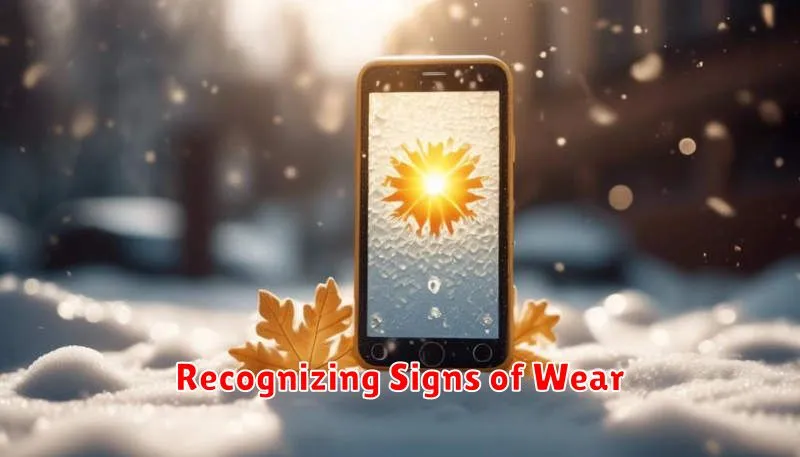In today’s fast-paced world, smartphones have become indispensable tools for communication, productivity, and entertainment. However, the rapid advancement of technology often leads to a short lifespan for these devices, prompting frequent upgrades and contributing to electronic waste. Extending the lifespan of your smartphone is not only financially beneficial but also environmentally responsible. This article will provide practical and easy-to-implement tips to help you maximize your smartphone’s lifespan, keeping it running smoothly and efficiently for longer.
Learn how to easily extend your smartphone’s lifespan with these simple strategies. We’ll cover essential maintenance practices, battery optimization techniques, and effective ways to protect your device from physical damage. By following these guidelines, you can prolong the life of your current phone, delaying the need for a new purchase and contributing to a more sustainable approach to technology consumption. Discover how you can keep your smartphone functional and relevant for an extended lifespan.
Regular Device Updates
One crucial aspect of maximizing your smartphone’s lifespan is keeping it updated. Manufacturers frequently release updates that not only introduce new features but also address security vulnerabilities and improve performance. These updates optimize the operating system and pre-installed apps, ensuring they run smoothly and efficiently on your device.
Failing to update your phone can leave it susceptible to malware and other security threats. Outdated software can also lead to performance degradation, making your phone slower and less responsive over time. Furthermore, some apps may eventually become incompatible with older operating system versions, limiting your phone’s functionality.
Therefore, it’s highly recommended to enable automatic updates whenever possible. This ensures your device receives the latest patches and improvements without requiring manual intervention. Regularly check for updates if you prefer manual control, and prioritize installing them promptly.
Battery Management Techniques

Effective battery management is crucial for extending your smartphone’s lifespan. Modern smartphone batteries, typically Lithium-ion, degrade over time, leading to reduced capacity and eventually requiring replacement. By following a few simple techniques, you can significantly slow down this degradation process.
Avoid extreme temperatures. Both excessive heat and extreme cold can negatively impact battery health. Store and operate your device within recommended temperature ranges.
Optimize charging habits. Contrary to popular belief, regularly depleting your battery to 0% is not beneficial. Instead, aim to keep your charge level between 20% and 80%. Additionally, avoid leaving your phone plugged in overnight or for extended periods after it reaches 100%.
Reduce battery-intensive activities. High screen brightness, constant GPS usage, and intensive gaming can drain your battery quickly. Adjusting screen brightness and limiting background processes can help conserve battery life.
Proper Handling and Protection
Physical protection is paramount to extending your smartphone’s lifespan. Invest in a high-quality case that offers adequate drop and scratch protection. A screen protector is also essential to prevent cracks and scratches on the display, which is one of the most vulnerable components.
Careful handling plays a significant role. Avoid placing your phone in pockets with keys or coins, as these can cause scratches. Be mindful of where you set your phone down, opting for softer surfaces when possible. Avoid exposing your device to extreme temperatures, both hot and cold, as this can damage the battery and internal components.
Cleanliness is key to maintaining both aesthetics and functionality. Regularly wipe down your phone with a soft, lint-free cloth. Avoid using harsh chemicals or abrasive cleaners, which can damage the screen and body. Pay attention to the charging port and speaker grilles, as these areas can accumulate dust and debris.
Avoiding Overcharging
Overcharging, a common concern among smartphone users, doesn’t significantly impact modern batteries as it once did. Contemporary phones utilize sophisticated power management systems that cut off the charging process once the battery reaches 100% capacity.
However, while the risk of damage from leaving your phone plugged in overnight is minimal, consistently keeping your battery at 100% can contribute to slightly faster degradation over the long term. “Trickle charging,” the process of maintaining a full charge, generates minor heat, which can accelerate the natural aging process of the battery.
To optimize battery health, consider unplugging your device when it reaches full charge or utilizing features like “Optimized Battery Charging” available on some smartphones. This feature learns your charging habits and delays the final charging phase until just before you typically unplug your device.
Aim to keep your battery level between 20% and 80% for optimal longevity. While occasional full charges and discharges are harmless, consistently staying within this range minimizes stress on the battery and contributes to its overall lifespan.
Recognizing Signs of Wear

Extending your smartphone’s lifespan begins with recognizing the signs that indicate it’s time for some attention. These signs can be subtle or obvious, ranging from software glitches to physical deterioration. Being aware of these indicators can help you address potential issues before they escalate into major problems.
Performance Issues: A significant slowdown in app loading, frequent freezing, or unexpected restarts can signal underlying hardware or software issues. Monitor how your phone performs daily tasks. If it struggles with simple operations, it might be showing signs of wear.
Battery Problems: Reduced battery life is a common symptom of an aging smartphone. If you find yourself needing to charge your phone multiple times a day, even with moderate use, the battery may need replacement. Similarly, sudden shutdowns or erratic battery percentage readings are also warning signs.
Physical Damage: Visible scratches, cracks, or dents on the screen or body are obvious signs of wear. While cosmetic damage might not directly impact functionality, it can make the phone more susceptible to further damage. A cracked screen, for example, can easily worsen, affecting the touchscreen’s responsiveness.

